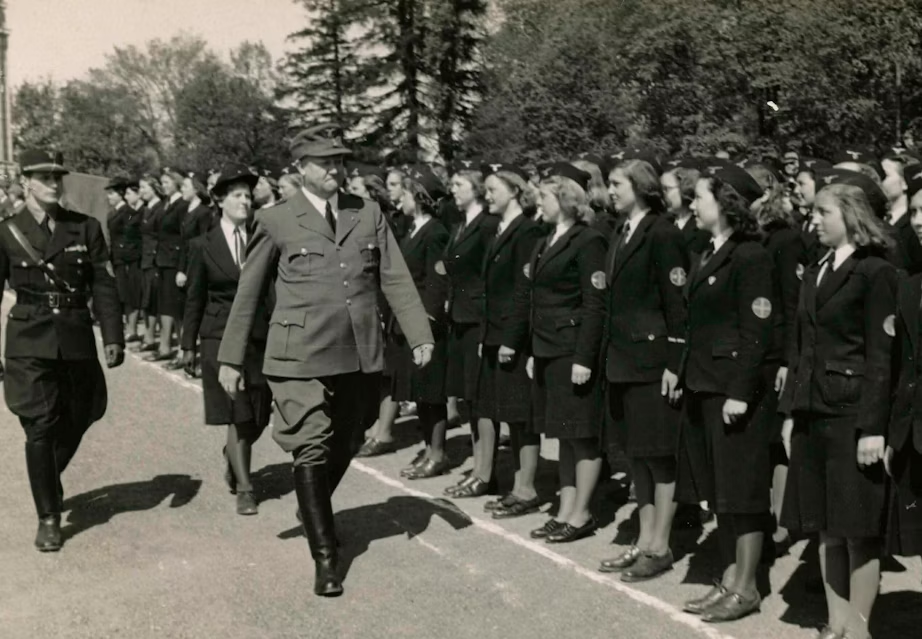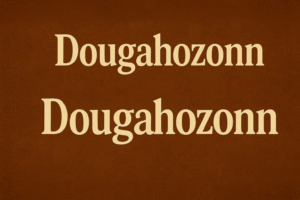Fascisterne: The Rise of Fascism in Europe
Introduction to Fascisterne and Their Historical Roots
The Danish word Fascisterne (lit. The Fascists) was used to refer to the adherents of fascist principles that emerged into power in the first half of the 20th century in Europe. Fascism is a political ideology that is based on authoritarian nationalism, concentration of power, oppression, and in many the exaltation of a singular national spirit. The origins of fascism can be found in post-World War I discontent, as economic crisis, unemployment rates and social unrest prepared a rich soil in which radical ideas could grow. Fascism was born in the Italian case under the leadership of Benito Mussolini in 1922, and the prototype was rapidly followed in other European powers such as Germany, Spain, and Hungary. Fascisterne came to being not only as a political change, but also as a social and cultural change that made an everlasting impact on European history.
The Rise of Fascism in Italy: Mussolini and the First Fascisterne
Fascism as a state ideology first rose in Italy. Benito Mussolini used to be a socialist who created the National Fascist Party in 1921. His acquisition of the office was made possible by the fact that the government was not popular due to the fear of communism and a strong leadership that was punctuated by popular demand. In 1922, Mussolini led an army to Rome, and King Victor Emmanuel III made him Prime Minister. Coupled with suppression of the press, censorship, suppression of democratic institutions, and the promotion of a totalitarian government, Mussolini quashed democratic institutions within a short time. In Italy, the Fascisterne advocated militarism, together with nationalism and submission to the state. The philosophy attracted most of the Italians who were being subjected to economic crises and national humiliation following World War I. The success of Mussolini led to the replication of the same in other parts of Europe, as Italy became the model of fascist rule.
Adolf Hitler and the Nazi Version of Fascisterne in Germany
Whereas Mussolini introduced fascism, Adolf Hitler developed it to the extreme. In 1919, Hitler became a member of the German Workers Party, which was later to turn into the National socialist German Workers Party or more commonly known as the Nazi Party. In his book Mein Kampf, he presented his fascist ideology that focused on the dominance of the Aryans, anti-semitism, and the Lebensraum (expansion of its territory). Then, in 1923, following the failed Beer Hall Putsch, Hitler acquired power in a legitimate way by becoming the Chancellor in 1933. Similar to Mussolini, Hitler forbade any opposition, censored the media, and governed with fear and propaganda. The Nazi Fascisterne brought the harsh measures that entailed the Holocaust, which resulted in the systematic murder of six million Jews. The fascist rule of Hitler drove Europe into World War II. His brand of fascism left the most implacable marks in European history and is the most well-known instance of totalitarian government.
Fascist Movements Across Europe: Spain, Hungary, and Beyond
Being represented in every country in a different manner, the ideology of fascism swept across Europe quite fast. During the Spanish Civil War (19361939) in Spain, General Francisco Franco carried out a fascist coup against a democratic regime. Franco won with the support of Hitler and Mussolini and turned to the creation of a military dictatorship that existed until 1975. Miklós Horthy and subsequently the Arrow Cross Party in Hungary took on fascist ideologies and joined up with Nazi Germany. The Iron Guard, which was a fascist and anti-Semitic, and nationalist organization, emerged in Romania. Oswald Mosley spearheaded the British Union of Fascists even in Britain. Even though they all carried a pattern of authoritarianism, nationalism, and suppression of other ideologies, the movements were different in their strongholds. The proliferation of Fascisterne reflected the extent to which Europe was imbued with war, economic insecurity, and communist insecurity.
The Role of Propaganda and Censorship in Fascist Control
The one thing that was part and parcel of each and every fascist regime was control of information. Fascisterne realized that it was possible to influence people to have a certain opinion through manipulation of media, education, and cultural expression. In the case of Nazi Germany, Joseph Goebbels, the Minister of Propaganda, was constructing messages which were praising the regime and dehumanized the enemies. Loyalty and critical thinking were being instilled through movies, posters, school textbooks, and radio broadcasts. In Italy, the Mussolini government employed state-owned newspapers as well as the organized spectacles of the masses to support the image of the heroic leader as a dominant title of leadership, the so-called Duce. There was no tolerance of other opinions, and any form of opposing views was quashed, especially violently. The approach played a critical role in establishing control and building a cult of personality around leaders. Propaganda meant that Fascisterne could not only dictate what people did, but also what to think, and thus it was a horrible characteristic of their rules.
Economic Policies Under Fascist Regimes in Europe
Fascist economies did not all have the same structure, but they had similarities: the predominance of the state in industries, prohibition of labor unions, and the concentration on the production of military equipment. Mussolini envisioned a corporate state in which work and machines, business and state, were together in a state of tight control. Nevertheless, as a matter of fact, it tended to benefit large corporations and trampled the rights of workers. To ease unemployment in Nazi Germany, Hitler initiated huge construction projects, big massive work schemes such as the Autobahn to prepare the economy for war. The rearmament is one of the strategies undertaken by both regimes, which positively influenced the economy at first and caused militarization and conflict in the long-term perspective. Fascisterne held the promise of prosperity and recovery of their nations, and frequently caused their countries to go to the dogs. Such temporary success was outweighed by the effects of long-term destruction and widespread devastation that far outweighed any short-term benefits, as aggression and conquests resulted in economic and physical destruction of Europe.
The Fall of Fascisterne After World War II
The failure of the fascist powers in World War II led to the fall of the fascist regimes in Italy and Germany. Mussolini was found and killed by the Italian resistance in 1945; Hitler, on the other hand, had committed suicide in his bunker at Berlin. The Nuremberg Trials put Nazi leaders on trial for war crimes, and this opened the eyes of the world to the atrocities that occurred under fascist rule. In the case of Spain, Franco was able to remain in power because of the Cold War game of politics, but even his regime slowly changed with his death. Throughout Europe, there was a vigorous tendency to avoid the recurrence of Fascisterne. The new constitutions focused on democracy, human rights, and the rule of law. That the European Union was established to encourage peace and cohesiveness was partly due to the devastation caused by fascism. Fascism did not have the last word, but it still impacts the political arena of modern Europe.
Modern Echoes: The Resurgence of Far-Right Nationalism
Although classical fascism ceased to exist in the middle of the 20th century, there are some signs of fascist ideology in some new forms that exist. In Europe and the rest of the areas, far-right parties have been gaining popularity through nationalism movements, anti immigration policy as well as anti-global institution sentiments. In other nations, such as Hungary and Poland, governments have been labeled as authoritarian and sabotaging democratic standards. The new tool of spreading extremist ideologies has been found within social media and digital platforms. These movements themselves do not reflect the original Fascisterne at all, though there is a worry that democracy is weak. Economic angst, cultural panic, and the partisanisation of politics have developed an environment akin to that which led to fascism in the 1900s. The revival of the nationalistic rhetoric serves as a reminder that we are not to forget what history teaches us, that we have to be guarded in order to preserve liberty.
Why Understanding Fascisterne Is Still Important Today
The study of the Fascisterne is not an exercise in memory of the past; it is a lesson for the future. Fascism takes root when individuals are disorganized, so they are powerless, distant, and scared. It provides no-nonsense solutions to complicated issues, which many times is often done by pointing out minorities or other outsiders. We can tell the symptoms of fascism within our societies by knowing how fascism happened and the way it works. Fascisterne makes us aware of the democracy that always has to be defended. Amid the wave of new authoritarian regimes that are appearing across the globe, the necessity to comprehend and memorise the events that led to the rise of fascism in Europe has become more important than ever. Education and awareness will be needed to make sure that such ideologies never make it into power once again.












Post Comment